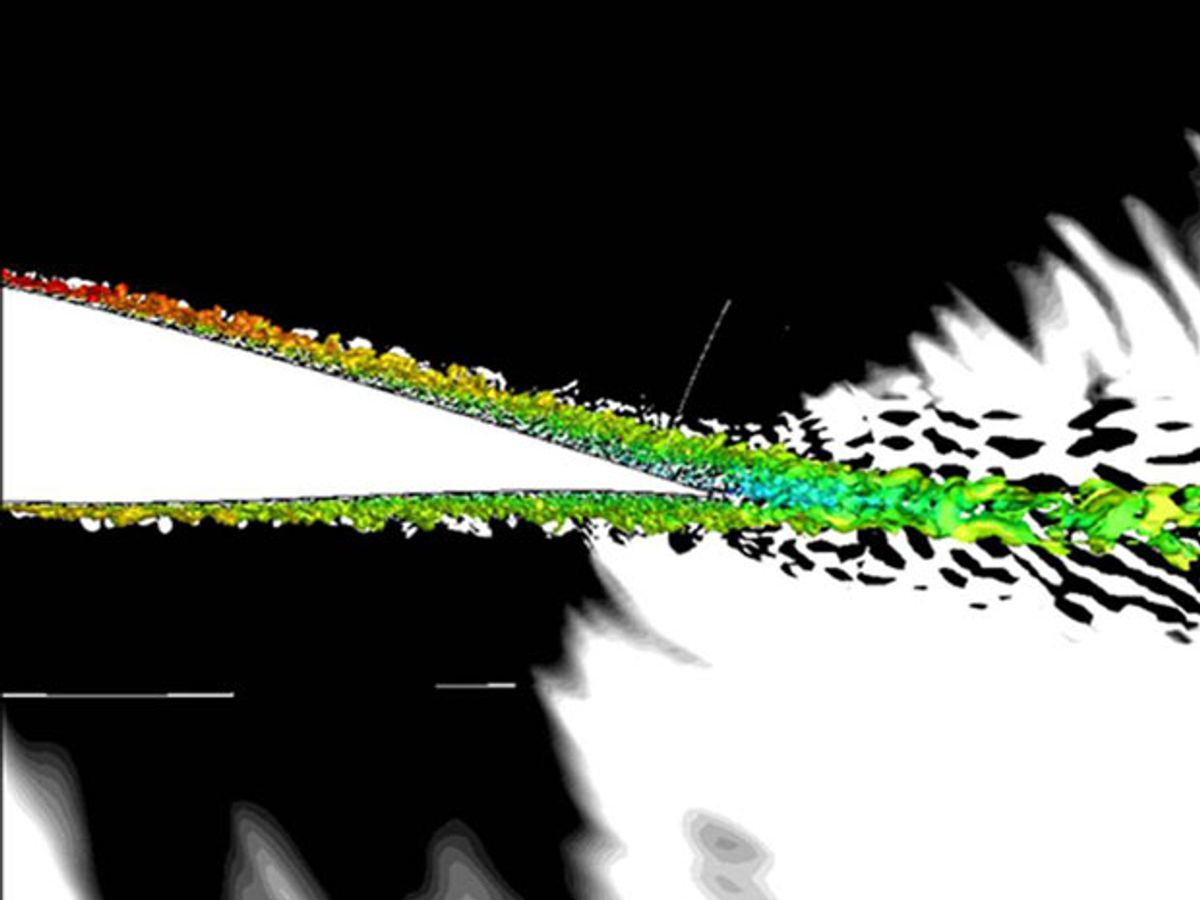Noise created by giant wind turbines is high on the list of barriers to renewable energy deployment, with NIMBY and health complaints threatening or at least delaying a number of projects around the world. But noise also is related to efficiency, and now the research division for turbine manufacturing giant GE says it has figured out how to reduce noise and boost output. Win all around, apparently.
GE worked with Sandia National Laboratories in Albuquerque, New Mexico, to engineer new designs that would reduce noise. They used the Red Mesa supercomputer, which, when it first began operations in 2010, could reach speeds (500 teraflops) that made it the 10th fastest computer in the world. GE used it to run a Stanford University-created program called a high-fidelity Large Eddy Simulation "to predict the detailed fluid dynamic phenomena and resulting wind blade noise," according to a GE press release. After three months of continuous runs with the Large Eddy Simulation, the researchers apparently had "valuable insights that were used to assess current engineering design models, the assumptions they make that most impact noise predictions, and the accuracy and reliability of model choices."
That's a bit vague, what's unequivocal is the bottom line: a turbine rotor design that's one-decibel quieter equates to a 2-percent increase in annual energy yield, GE says. And with 240 gigawatts of wind power forecasted to be installed around the world in the next five years, that 2-percent increase could be worth 5 GW.
Aside from efficiency, reducing noise could cut down on NIMBY fights when it comes to getting wind projects built, and could possibly allow the turbines to be built slightly closer to where people live. Reports of health problems thanks largely to turbine noise (as well as "shadow flicker") remain largely anecdotal, with bigger studies suggesting that conditions such as "wind turbine syndrome" are likely overblown. But it's clear that cutting down on noise would benefit pretty much everybody, whether or not they live near turbines.
Image: GE
Dave Levitan is the science writer for FactCheck.org, where he investigates the false and misleading claims about science that U.S. politicians occasionally make.



